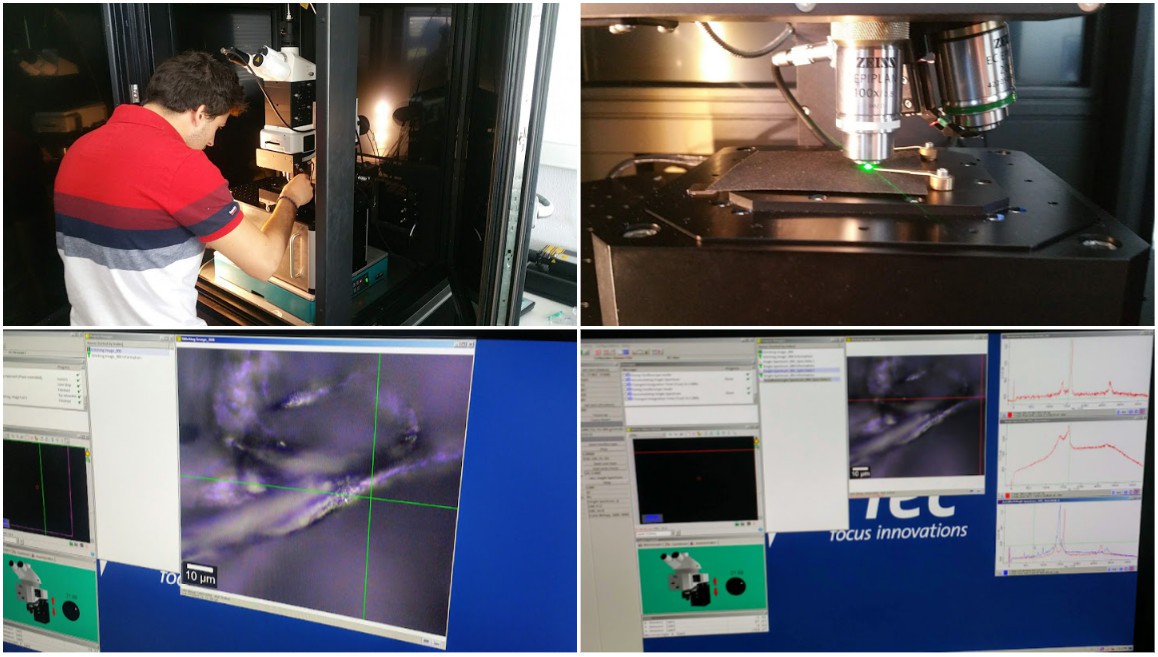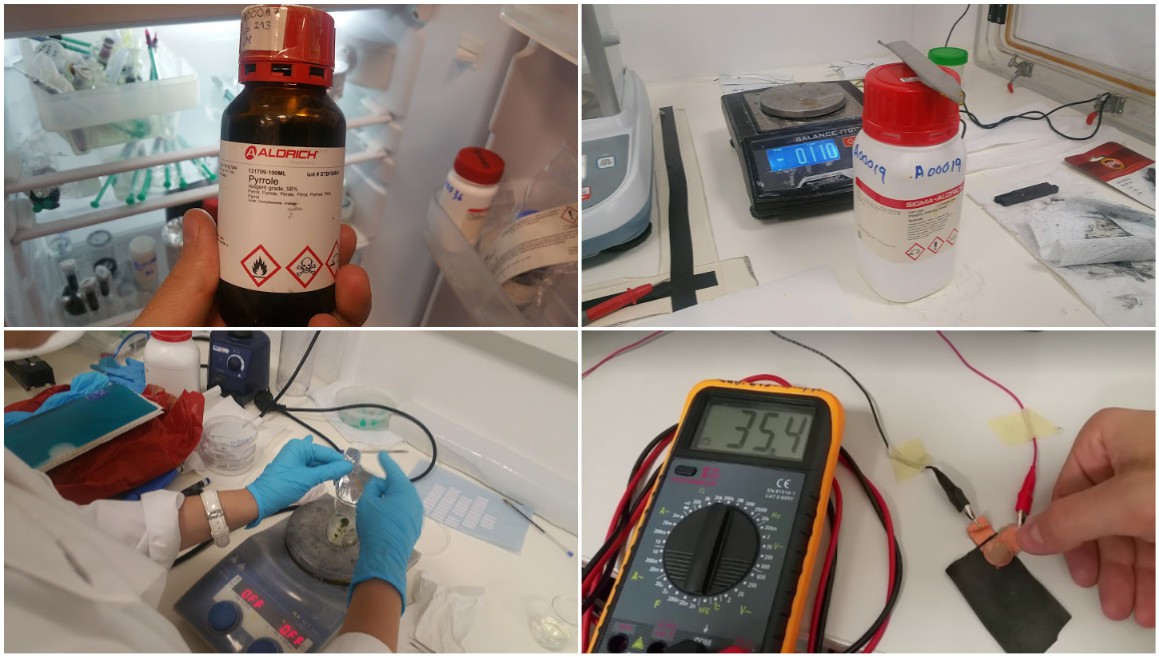Origin
While exploring musical textile interfaces, we used the piezo-resistive material below (dark grey):
It was expensive and became hard to get because of a new exclusive contract with another company, so with material scientists, we reverse-engineered it.
Analysis
First, we observed a reference sample with a classic microscope:
💡Trick: to check if it is a classic coating (thick paint) or a more sophisticated approach (like our polymerization), the best technique is to use liquid nitrogen to freeze and break the textile. Using a knife / scissors would potentially spread the eventual coating so it would not allow seeing the real inside.
Raman Spectroscopy
After checking the process type, Raman Spectroscopy is quite practical to try identifying materials. Here we compared our sample with similar ones from our database.
This magic tool shoots a laser pulsed at various frequencies and it measures the energy bounced, which allows creating a spectrogram (see bottom right).

Note: a possibly more intuitive illustration is the acoustic property of objects around us, a phone and a mug would resonate at very different frequencies...
Solution
It was fortunate, but this material science team happened to know several similar processes that could do this functionalization, so after trying several we worked on simplifying the simplest:

Bonus
One of the tools they use looks like a nuclear weapon, it took years to build it, and it definitely does't fit in our hackerspace kitchen, but next time we have to play with it!
 Drix
Drix
Discussions
Become a Hackaday.io Member
Create an account to leave a comment. Already have an account? Log In.